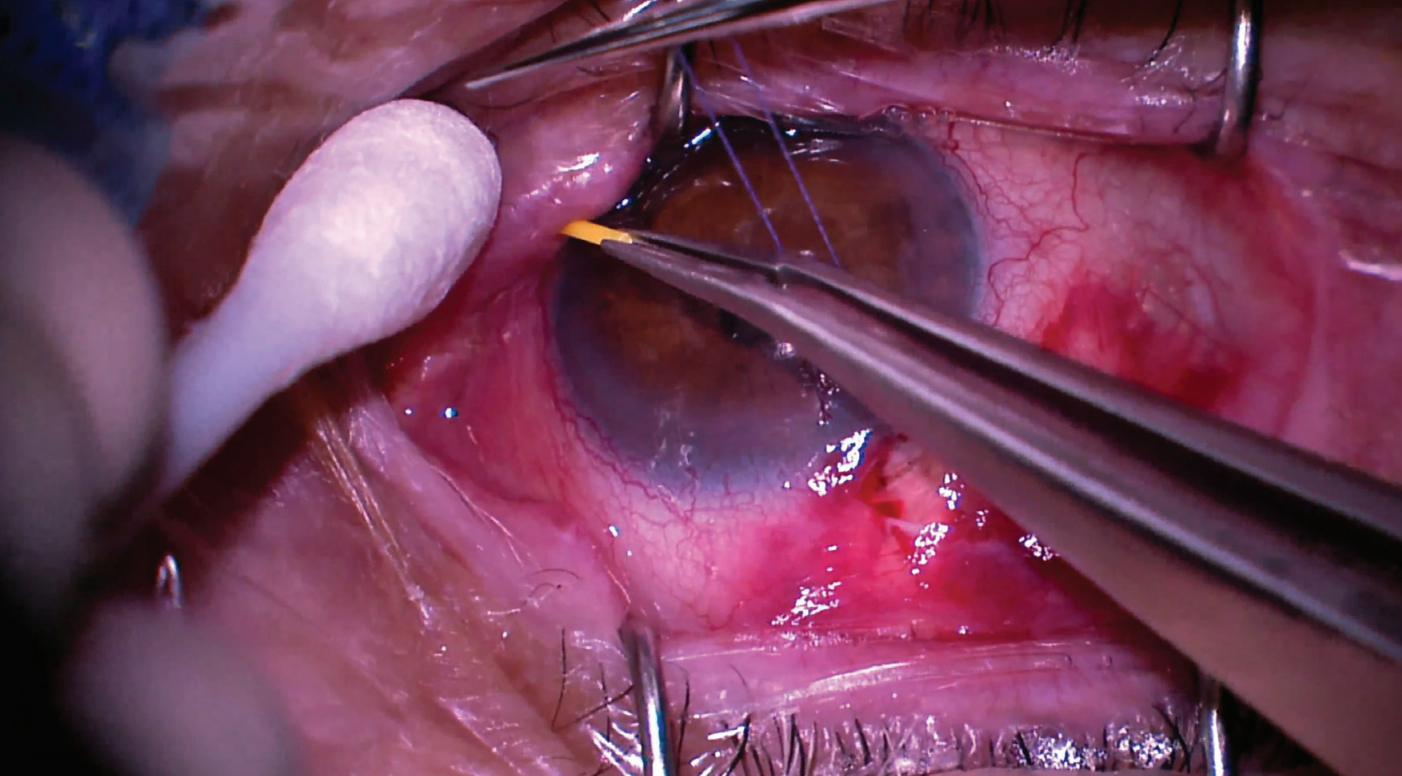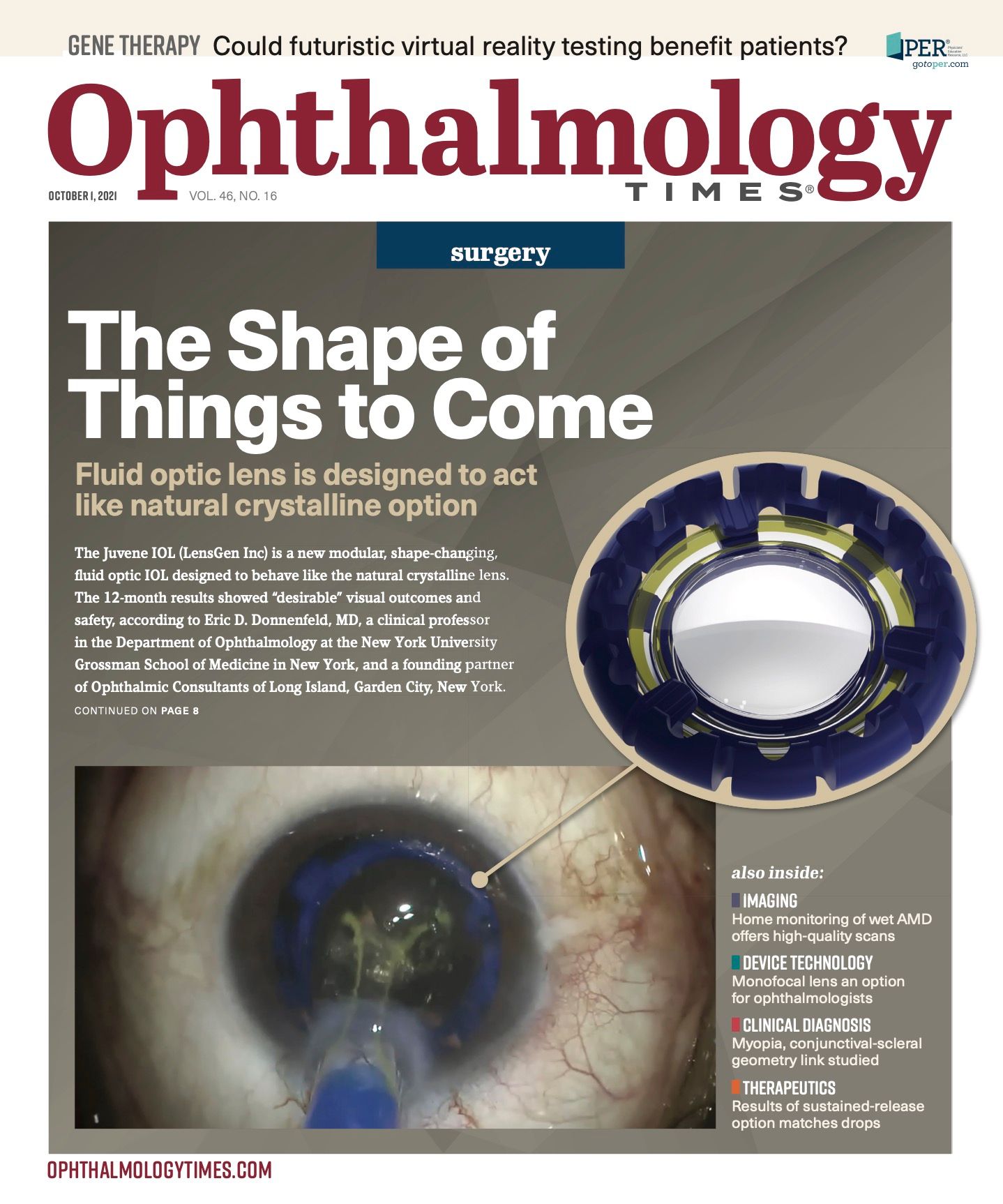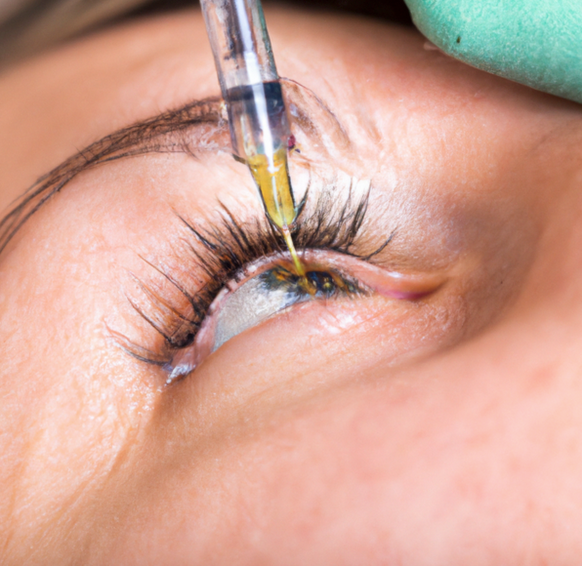Publication
Article
Digital Edition
Dexamethasone ophthalmic insert matches drops for inflammation control
Author(s):
Sustained-release option helps with patient adherence following surgery.
The dexamethasone ophthalmic insert is implanted in a patient. (Image courtesy of Kevin Jackson, MD)


Reviewed by Kevin Jackson, MD
A comparison of the dexamethasone ophthalmic insert (Dextenza; Ocular Therapeutix, Inc) with topical prednisolone showed that the inflammatory control provided by the 2 treatments was similar after minimally invasive glaucoma surgeries (MIGS) using the iStent (Glaukos) or Hydrus (Ivantis) devices during cataract surgery, according to Kevin Jackson, MD, with the Department of Ophthalmology at the Duke University School of Medicine in Durham, North Carolina.
Despite the minimal manipulation associated with the MIGS device, inflammation can develop and must be addressed postoperatively.
Related: Evaluating efficacy, safety of intracameral dexamethasone 9% vs topical regimen for cataract surgery
However, even under ideal circumstances, patient adherence can be an issue with the use of drops.
The dexamethasone implant is a sustained-release device that can address the inflammation postoperatively without instillation of drops.
The study
Jackson and colleagues evaluated in a retrospective, observational study (NCT04200651) how well the dexamethasone device controlled postoperative inflammation in patients who underwent surgery with use of a MIGS device and compared the results with those who received topical prednisolone.
The study included 84 eyes that underwent cataract surgery with use of a MIGS device with the dexamethasone implant or topical prednisolone.
The primary outcomes were the inflammation 1 and 3 months postoperatively; the secondary outcomes were the IOPs at 1 and 3 months postoperatively, the need for additional steroids, the presence of cystoid macular edema, and IOP spikes.
Related: Should nonclinicians inject dexamethasone implants?
Results
The patients (mean age, 74 years) were divided between the dexamethasone implant and topical prednisolone.
The groups were well matched demographically before surgery; after surgery the degrees of inflammation and IOP levels were also similar between the 2 groups.
There were no differences between the groups in the postoperative inflammation, and the percentage of patients with no cells in the anterior chamber was the same as the data reported previously, 62.1% to 81%, the authors said.
Fewer IOP-lowering drops were used and the IOP decreased in both groups.
IOP spikes in the dexamethasone group were about 5%, which is substantially lower than reported previously.
Related: Factors to consider in IOP elevations associated with vitreoretinal treatments
“Dextenza provided similar inflammation control to topical therapy in patients who received iStent or Hydrus with cataract surgery,” the investigators noted.
Moreover, the investigators also found that no differences were seen in inflammatory cells, cystoid macular edema, use of additional topical steroids, or IOP at any point.
Conclusion
“Dextenza appears to be a safe and effective alternative to topical therapy, and its use with intracameral antibiotics also allows for ‘dropless’ cataract surgery with iStent or Hydrus to be performed,” the investigators concluded.
--
Kevin Jackson, MD
E: kevin.j.jackson@duke.edu
This article is adapted from Jackson’s presentation at the Women in Ophthalmology 2021 Summer Symposium. The study was funded by Ocular Therapeutix Inc.

Newsletter
Don’t miss out—get Ophthalmology Times updates on the latest clinical advancements and expert interviews, straight to your inbox.





